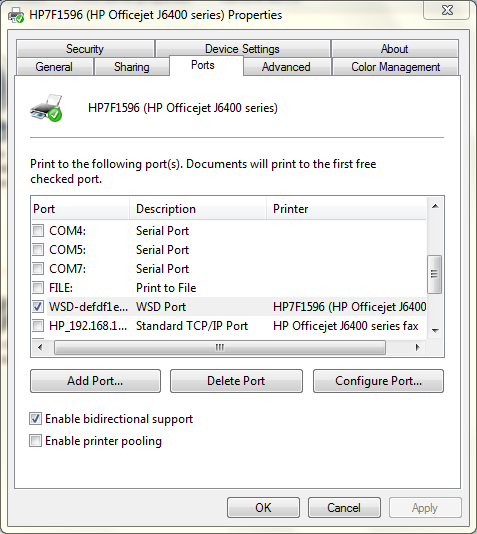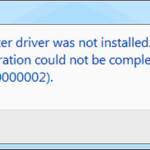What is a WSD printer port?
 The printer allows you to print the necessary documents from your computer or laptop. Most often, the connection to an external device is made using a cable. But sometimes one printer needs to be connected to several personal computers. This is done using a local network.
The printer allows you to print the necessary documents from your computer or laptop. Most often, the connection to an external device is made using a cable. But sometimes one printer needs to be connected to several personal computers. This is done using a local network.
The Windows operating system, starting with Vista, can recognize, connect and work with devices located on the local network, including printers. This is possible thanks to the Web Services For Devices feature.
The content of the article
What does the abbreviation WSD mean?
On older versions of the Windows operating system, the TPI protocol was used to work with devices located on the local network. But starting with Windows Vista, Microsoft replaced TPI with WSD.
WSD stands for Web Services For Devices, or web service for devices. This feature allows you to connect between devices using an IP address. All connected clients communicate over a wireless network using HTTP and UPD.
At its core, the WSD protocol is not just a port, but a service that manages them. It fully implements the Plug and Play function. In addition, Web Services For Devices allows you to define and set a security profile and expand its capabilities when the need for additional protection arises.WSD also has a device certificate, which allows it to verify their authenticity when connected.

ATTENTION! This protocol is available only to users of the Windows operating system released since 2008!
What is the WSD printer port for and how to use it
The Web Services For Devices port monitor performs four main functions. This:
- Discover and connect to networked print devices using WSD. Previously, the TPI protocol used made the connection by manually entering the IP address. Sometimes this led to the address being confused and communication between network clients being lost. Web Services For Devices finds devices and connects to them completely automatically. In this case, each time a job is sent, the correctness of the IP address is checked. This ensures constant communication between network clients.
- Send a print job. The TPI protocol sends data to a special port 9100. In this case, the device that received this signal must send a return response. This transmission method does not allow us to fully assess whether the printer received the job, what state it is in, and from whom exactly the job came. Web Services For Devices works differently. First, it sends a request that there is a task that needs to be completed. After which he receives a return response. If the device is ready for use, the protocol sends documents for printing.
- Constant status and configuration checking. The protocol receives continuous information about what state a particular printer is in. For example, is there paper or toner in the cartridge?
- Answer all requests from connected devices.
To enable this feature you must:
- go to “Network”, then go to the “Services” tab and find WSD there;
- in the window that appears, you should enable WSD;
- select a printer connection;
- apply and save all changes made and close the window.
The WSD protocol is universal. It works not only with printers, but also with other clients on the network. Web Services For Devices not only monitors their status, but also makes the necessary settings and changes in their operation.





